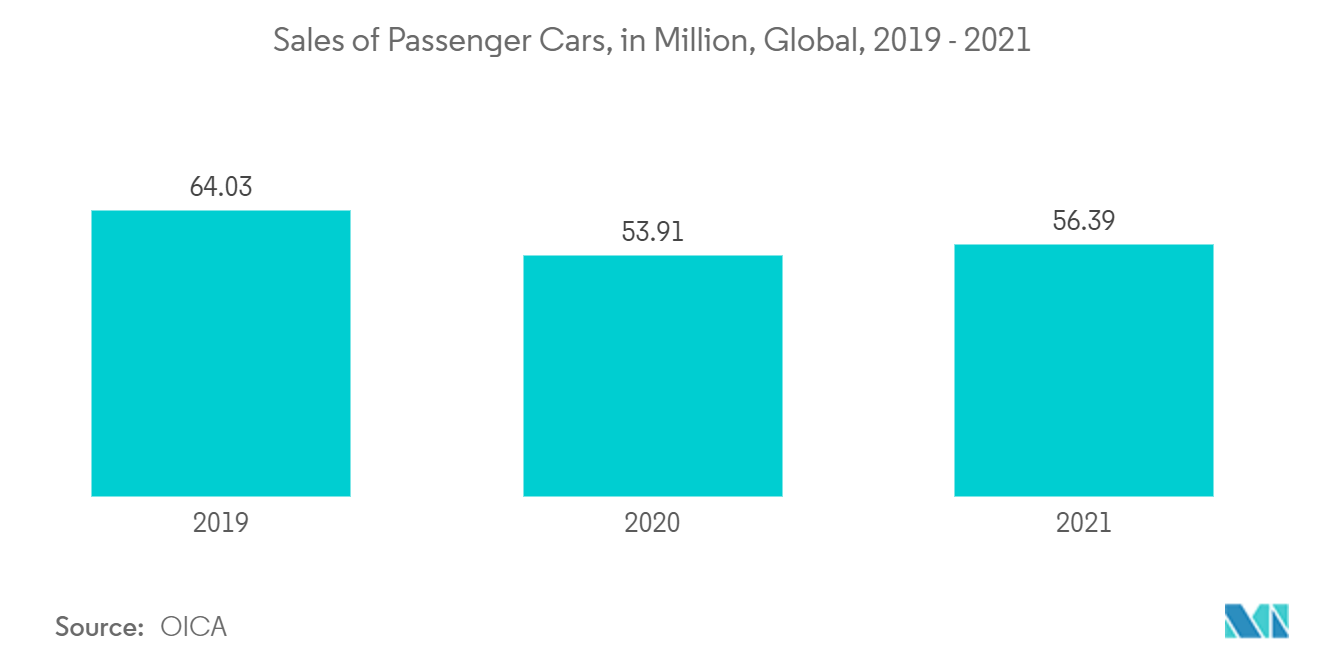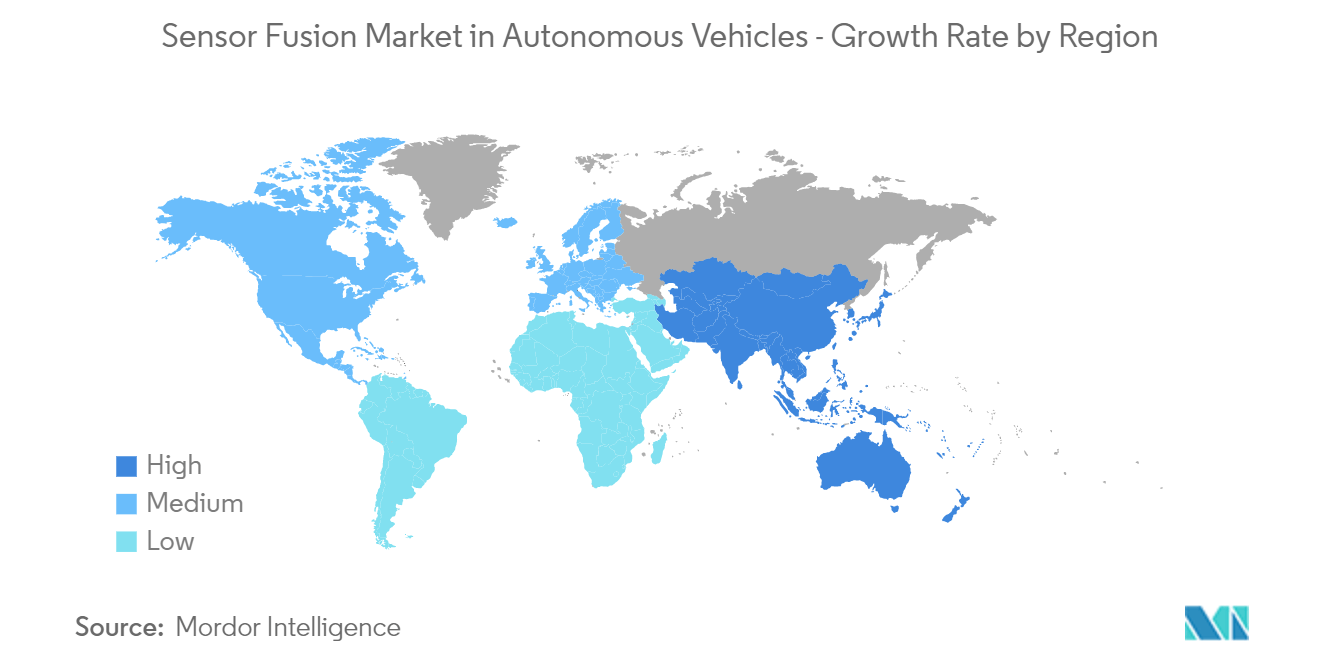Market Trends of Sensor Fusion Industry in Autonomous Vehicles
Passenger Cars to Hold a Significant Market Share
- There is an increasing interest among passenger car makers in developing autonomous cars, owing to the growing demand for vehicles with premium features. Car manufacturers, technology companies, and researchers are continuously working on further developing the technologies behind the autonomous car. As these vehicles include multiple sensors that gather massive amounts of data, sensor fusion emerged as an ideal solution to enable vendors to use the sensor data intelligently.
- Recent years have witnessed an upward growth trend in passenger vehicle sales. Although the pandemic affected the growth, the impact is more in the short term, which is expected to gain traction in the next few years. Such trends are expected to act as a significant driving factor for the growth of the studied market.
- One crucial aspect of autonomous vehicles is path planning. Sensor fusion plays an essential role here by integrating the sensor readings to construct a precise picture of the vehicle's state and predict the trajectories of the surrounding objects. Hence, the adoption would increase with the increase in passenger car sales, which are autonomous in the coming times.
- Furthermore, Autonomous Emergency Braking (AEB) is an enhanced active safety system that helps drivers avoid or mitigate collisions with other vehicles or vulnerable road users. Multiple sensors are often needed for accurate, reliable, and robust detections while minimizing false positives. With safety becoming an increasingly important issue in the automotive industry, especially in the passenger vehicle segment, the increasing adoption of AEB systems is expected to impact the demand for sensor fusion systems positively.

North America to Retain a Significant Market Share
- North America is among the largest automotive manufacturing hubs in the world. The economic growth of the region posed an impact on the sale of passenger cars and commercial vehicles. The United States is among the leading automobile manufacturers in the North American region; apart from high domestic consumption, the country also exports automobiles globally. For instance, according to the US International Trade Commission, the export volume of light vehicles reached 1,619.35 thousand units in 2021.
- The region is also among the pioneers in adopting ADAS-enabled vehicles and self-driven transportation solutions. According to Deutsche Bank, the US ADAS unit production volume was forecasted to reach 18.45 million by 2021. ADAS (advanced driver-assistance systems) is capable of supporting adaptive cruise control (ACC), automatic emergency braking (AEB), lane departure, blind-spot detection, 360° surround view, etc., as a lot of sensors are used in designing the ADAS systems, such trends are expected to drive the demand for sensor fusion solutions in the country.
- According to ITA, Canada is the second largest automotive market in the North American region, where imports represent about three-quarters of the new vehicles market. In 2021, the import value of passenger vehicles increased by about 26% (compared to the last year) to USD 27.8 billion. The country's acceptance of autonomous cars is growing significantly, encouraging automobile manufacturers to increase their investment. For instance, tech and motor companies like Tesla, Uber, Toyota, BMW, GM, and Nissan are all in the race to develop autonomous vehicles for Canadian consumers.
- Furthermore, Robotaxis (relying on a powerful array of advanced sensing technologies that include multiple LiDARs to maneuver complex urban environments safely) is not quite here. Still, Waymo, Cruise, and Uber are investing heavily in and operating experimental fleets in the United States, which is expected to create future opportunities.


